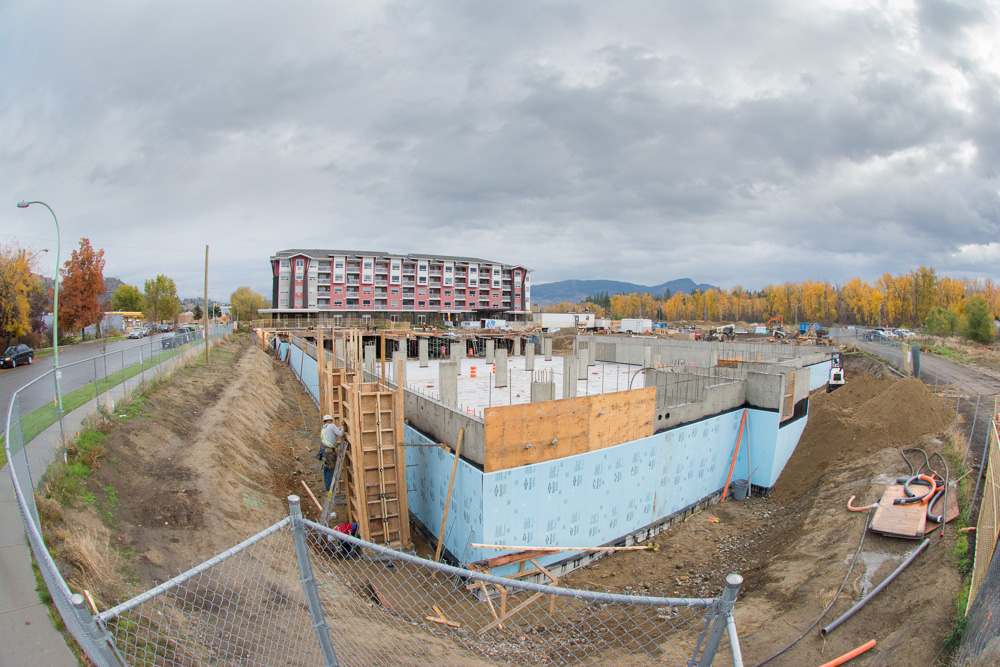4 Case Study 4 : Affordable Housing Crisis
Case Description
The following video provides a brief introduction to the Affordable Housing Crisis Case
- Canada’s Affordable Housing Crisis has been intensifying since the early 2000s. Driven by housing demand outstripping the supply of new housing units, the issue shows no signs of abating as the Canadian population grows rapidly, pushed by high immigration rates required for continued national economic growth and the stability of our social safety net. Restoring affordability requires the construction of 5.8 million new housing units by 2030 – 3.5 million more than projected under current development rates – but numerous obstacles stand in the way. In addition to the enormous cost such development would require, policy tools such as rent controls and benefits for new homeowners promise to only exacerbate the issue by decreasing supply or increasing demand, while a range of stakeholders – from municipal governments to households of all income levels – each hold strong and often opposing interests in housing policy. It is a “wicked problem.”
- The Affordable Housing Crisis is a study in the challenges stemming from conflicting public interests, confronting market failures with limited resources, and understanding the consequences of government intervention – even when action is demanded by the public.
- The case involves diverse dimensions related to political, jurisdictional, socio-economic, and theoretical economic factors and challenges. It connects closely to ongoing debates over market economics, government intervention, and persistently rising housing costs.
- Studying and learning from the challenges posed to policymakers by “wicked problems,” such as the Affordable Housing Crisis at the centre of concern over rising costs of living in Canada, is a important in that it prepares one to address matters that involve a wide variety of diverse stakeholders.
Case Description
In 2022, a growing consensus has formed among pundits and observers that Canada’s struggles with affordable housing constitutes a true crisis, wherein “never before in Canada’s history has quality housing been as far out of reach for so many people.”[1] The 2018 census determined 1,644,900 Canadian households – 12% of the total – were in “core housing need,” meaning their housing falls below one or more of the minimum adequacy, affordability, or suitability standards and cannot afford alternative housing in their community. The problem of affordability is highly concentrated in major metropolitan areas, approaching 20% of households in growing metropolitan areas such as Toronto and Vancouver.[2] In a sharply critical 2016 report, the United Nations Committee on Economic, Social and Cultural Rights highlighted the lack of a national housing strategy in describing severe levels of homelessness and debt even among individuals holding full-time jobs.[3] In 2017, Parliament passed the National Housing Strategy, which has since been upgraded to funding of over $70B CAD to “remove 530,000 families from housing need, cut chronic homelessness by 50%, and change the face of housing in Canada forever” through various initiatives taking place over the following 10 years.[4] In 2021, however, the

national MLS Home Price Index finished the year up a record 25.3% from 2020. At least in the short term, observers agree the market, fueled by historically low interest rates, unprecedented demand, and a faltering housing supply, “shows no signs of significantly slowing down.”[5]
Fundamentally, the crux of the matter is one of simple economics: housing demand – in terms of both new construction and resale markets – has been vastly outpacing supply in the country. A 2021 Scotiabank report determined Canada produces the fewest units of new housing per 1,000 people among the G7 nations, while the country has simultaneously enjoyed a relatively high population growth rate, in large part due to accepting a proportionally high number of “economic class” immigrants who demand quality housing. For perspective, Canada accepted over 400,000 newcomers in 2021 while the USA, with a population roughly 10 times greater than our own, welcomed only 500,000 immigrants.[6] The inevitable consequence, according to Carleton University senior research fellow Steve Pomeroy, is that housing units and rental properties are experiencing significant price increases.
Between 2014 and 2019, blossoming housing demand saw rents in Canada increase by approximately 20% while incomes remained essentially unchanged.[7] In an interview, housing analyst Steve Saretsky similarly noted the efforts to bring greater talent into the labour force, while necessary to reduce the national deficit, inevitably adds immense pressure to a housing market that has experienced strain since the late-20th century. According to Dr. Murtaza Haider of Ryerson University’s Department of Real Estate Management, “[t]he reality is we don’t have a one-variable economy, and the need for more immigrants is determined and dictated by the need for the economy to grow” and avoid a labour crisis stemming from the rapidly aging domestic population.[8] Simply put, the economic causes of the housing crisis are equally well known by and unavoidable for the government. The solution is similarly clear – in the words of Minister of Housing Ahmed Hussen, “[a] lot of developers are simply not producing enough [affordable housing units], so our government has made it a priority to build them across the country”. This solution, however, is incredibly expensive to adequately fulfill, especially at a time when the government is already struggling with the pressures and inflation associated with COVID-19, global supply line disruption, and conflict in Ukraine.[9]

Another factor, which has featured prominently in public discourse but has had its significance contested, is the impact of foreign buyers seeking to gain rental income or simply speculate in the Canadian housing market. Some estimates suggest there are 800,000 – 1.1M empty, foreign owned homes in Canada, which have proven highly valuable investments due to the overheating housing market while economic struggles pushed the Bank of Canada to maintain rock-bottom interest rates.[10] In spring of 2022, after housing prices jumped more than 20% to over $800,000 CAD (or more than nine times average household income), the Liberal government proposed a two-year ban on foreign buyers of home real estate. Industry analysts were quick to cast doubt on the impact of such a ban, however, pointing to how foreigners had accounted for just 1% of purchases in 2020 after a peak of nearly 10% in 2015 and 2016. They say it is clearly the relationship between strong population growth and supply shortage that is generating the friction, made worse in many cities by municipal rules and regulations that restrict development and community associations that resist the construction of concentrated, affordable housing units. Despite housing affordability representing a major platform plank for the Liberals in the 2019 and 2021 elections, the government’s actions during the COVID-19 pandemic – namely slashing interest rates to stabilize the economy – have lowered borrowing costs and boosted housing demand even further. Other programs, such as those supporting first-time buyers, have similarly only served to increase demand and thereby exacerbate the affordability crisis.[11] Finally, economists persistently warn of the dangers of excessive government intervention and rent controls, which historical evidence shows tend to only further reduce supply of new housing.[12]
The Affordable Housing Crisis constitutes a highly timely “wicked problem” case study that is the subject of intense concern in Canada, both among the many households and first-time buyers that are threatened by rising housing costs and, consequently, policymakers at every level of government. These public decision-makers face a variety of “balancing acts” in confronting the issue: bringing housing demand in line with supply without impeding the immigration and population growth vital to the economy, increasing housing supply without exorbitant spending of tax dollars, and addressing the market’s failure without damaging and counterproductive forms of intervention, among many other economic, political, and practical considerations. Within the public itself, the conflicting interests of a diversity of stakeholders – low-income households from different parts of the country in equally desperate need of housing, higher-income households who do not welcome high-rise housing development in their neighbourhoods, young adults and seniors struggling to meet rent payments, landlords and developers who resist price controls – must also be taken into the decision-making calculus. In this way, the case study illustrates how “wicked problems” pose a great challenge for public policymakers by not being resolvable by any one “correct” or even “objectively best” solution. In studying how the Affordable Housing Crisis has steadily intensified for nearly two decades, one can gain unique insights into how some of the most significant and prevalent societal issues are resistant to policy solutions. Additionally, the case study illustrates how public policymakers may often be required to find a balance between many conflicting factors and interests when confronting an issue that impacts many stakeholders.
For students of public policy and public administration, there are three particularly prominent factors of the Affordable Housing Crisis case study. Firstly, it offers insight to how policymakers may be forced to grapple with conflicting interests while acting to fulfill their duties to the public, as society-spanning issues may lead to large portions of the population holding directly opposing preferences (i.e. intervention vs. maintaining the status quo). While decision-making responsibility may ultimately rest with elected officials, political pressure may lead politicians to pursue action – or inaction – that puts policymakers at the centre of public criticism. Secondly, the case study is also informative of the challenges policymakers face when tasked with confronting market failures with limited resources. In a market-based society such as our own, directly resolving failures of the market to balance supply and demand can be prohibitively expensive, leaving policymakers to strive to minimize the resulting harm. Lastly, economists’ warnings that programs intended to ease pressure on households have only exacerbated the overheating housing market and that rent controls will similarly only further restrict the supply of new housing speaks to the many complications associated with government intervention, even as those who are struggling in the status quo demand action.
Resources
- Sharma, Neil. “Yes, Canada Has a Housing Affordability Crisis. Is It the Federal Government’s Fault?” Storeys, published March 24, 2022. https://storeys.com/canada-housing-affordability-crisis-federal-government/.
- Editorial explains why unaffordable housing in Canada constitutes a genuine crisis and explains how federal policies have contributed to the issue.
- “Canada’s Housing Supply Shortage: Restoring affordability by 2030.” CMHC, published June 23, 2022. https://www.cmhc-schl.gc.ca/en/blog/2022/canadas-housing- supply-shortage-restoring-affordability-2030#:~:text=To%20restore%20affordability%2C%20an%20additional,for%20everyone%20living%20in%20Canada.
- Official Canada Mortgage and Housing Corporation webpage details Canada’s severe housing supply shortages and provides an estimate of how housing supply will need to increase by close to 200% to restore affordability by 2030.
- “Affordable housing programs across Canada.” CMHC, published December 24, 2020. https://www.cmhc-schl.gc.ca/en/professionals/industry-innovation-and-leadership/industry-expertise/affordable-housing/develop-affordable-housing/provincial-territorial-programs-programs.
- Official Canada Mortgage and Housing Corporation webpage provides links to information on the affordable housing programs implemented by each province.
- “Making Housing More Affordable.” Department of Finance Canada, published April 7, 2022. https://www.canada.ca/en/department-finance/news/2022/04/making -housing-more-affordable.html.
- Official Government of Canada webpage provides a summary of the “significant steps” included in Budget 2022 that will improve affordable housing in Canada.
- “What is the National Housing Strategy?” Government of Canada, 2021. https://www.placetocallhome.ca/what-is-the-strategy.
- Official Government of Canada webpage provides a link to download the National Housing Strategy federal housing program, promising to re-establish housing affordability through an investment of over CAD $70 billion.
- https://storeys.com/canada-housing-affordability-crisis-federal-government/#:~:text=Moreover%2C%20the%20number%20of%20units,fall%20below%20the%20G7%20average. ↵
- https://www150.statcan.gc.ca/n1/daily-quotidien/201002/dq201002a-eng.htm ↵
- https://tbinternet.ohchr.org/Treaties/CESCR/Shared%20Documents/CAN/E_C-12_CAN_CO_6_23228_E.pdf ↵
- https://www.placetocallhome.ca/what-is-the-strategy ↵
- https://www.cpacanada.ca/en/news/pivot-magazine/2022-02-16-housing-market ↵
- https://storeys.com/canada-housing-affordability-crisis-federal-government/#:~:text=Moreover%2C%20the%20number%20of%20units,fall%20below%20the%20G7%20average. ↵
- https://www.cbc.ca/news/canada/financialization-and-canadian-renters-1.6378257 ↵
- https://storeys.com/canada-housing-affordability-crisis-federal-government/#:~:text=Moreover%2C%20the%20number%20of%20units,fall%20below%20the%20G7%20average. ↵
- https://www.macleans.ca/politics/ahmed-hussen-has-a-plan-to-solve-canadas-housing-crisis/ ↵
- https://storeys.com/canada-housing-affordability-crisis-federal-government/#:~:text=Moreover%2C%20the%20number%20of%20units,fall%20below%20the%20G7%20average. ↵
- https://www.bbc.com/news/business-61027374 ↵
- https://www.washingtonpost.com/opinions/2019/06/15/comeback-rent-control-just-time-make-housing-shortages-worse/ ↵

